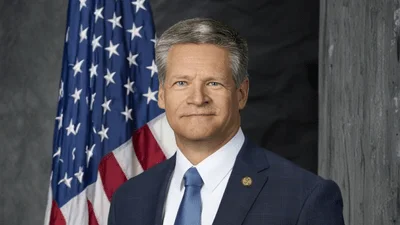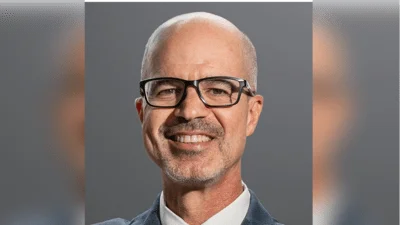The Congressional Record is a unique source of public documentation. It started in 1873, documenting nearly all the major and minor policies being discussed and debated.
“GAMING AND COLORADO'S ECONOMY” mentioning the U.S. Dept. of Transportation was published in the Extensions of Remarks section on pages E1283-E1285 on July 12, 1996.
The publication is reproduced in full below:
GAMING AND COLORADO'S ECONOMY
______
HON. WAYNE ALLARD
of colorado
in the house of representatives
Friday, July 12, 1996
Mr. ALLARD. Mr. Speaker, as Congress continues to research and debate the impacts of gaming, I believe that this report, published by Colorado's Office of State Planning and Budgeting, may be a helpful resource for members.
Issue Brief: Gaming Impacts the Colorado Economy
Demands on Colorado's general fund, the tax money that pays the state's bills, increase each year, primarily from the areas of K-12 education, higher education, human services, public safety and capital construction. The state coffers are filled by a variety of taxes and fees, including individual and corporate income taxes, sales and use taxes, insurance and excise taxes, and interest earnings. State lawmakers and government budget officers try to stretch the general fund as far as possible to maximize services, and they also look for creative ways to raise additional revenues. The gaming industry has been tapped in many states, including Colorado, and each year it contributes a larger amount to the general fund. How this industry began and has grown illustrate clearly that gaming, when allowed to expand even under tightly controlled regulations, is an ongoing source of state revenue. During the last five fiscal years, revenues from the gaming industry have steadily increased, demonstrating a trend expected to continue.
Identifying a new revenue source
Movies about the Old West have left most viewers with vivid impressions of raucous poker games in dusty, smoke-filled saloons. Slick gun-totin' professional gamblers were often paired with innocent greenhorns fresh off the trail. Saloon proprietors were only to glad to help empty their pockets of any money, providing liquor by the bottle, a room and a bath, entertainment, and, of course, gambling.
Gradually, after statehood was attained, Colorado citizens had a state constitution and volumes of statutes as the basis for their legal systems. Permissive attitudes that had existed in the wide-open towns gave way to tighter control. Opinions regarding gambling obviously changed, because prohibitions against such activities were written into the criminal code in 1913. The legislative declaration states,
``the policy of the general assembly, recognizing the close relationship between professional gambling and other organized crime, (is) to restrain all persons from seeking profit from gambling activities in this state . . . from patronizing such activities . . . to safeguard the public against the evils inducted by common gamblers and common gambling houses . . . '' (Source: Colorado Revised Statutes, 18-10-101)
Prohibiting gambling was thereby deemed good public policy, holding firm until 1949 when the Colorado Racing Commission was created. In recent years, the gaming industry has been expanded into other areas--bingo and raffle, lottery and lotto, and limited stakes gaming. In fiscal year 1995, the four gaming sources provided nearly $152 million in revenue.
racing
Members of the General assembly began to relax the prohibitions against gaming in 1949 when the Colorado Racing Commission was established. A portion of the legislative declaration reads, ``. . . for the purpose of promoting racing and the recreational, entertainment, and commercial benefits to be derived therefrom; to raise revenue for the general fund . . .'' (Source: Colorado Revised Statutes, 12-60-100.2)
The Racing Commission and the Division of Racing Events are located within the Department of Revenue. The commission's five members are appointed by the Governor and confirmed by the state Senate. They serve staggered terms and represent designated geographical areas and political parties. In addition, the statute specifies that one of the five members must be a practicing veterinarian and two must have racing industry experience. Duties of the commissioners range from promoting the health and safety of the animals to setting racing calendars. They also oversee the division's professional staff, which includes veterinarians, security personnel and other racing officials. The commissioners license racetrack owners and operators and hold them to rigid safety standards for spectators and sanitation guidelines for animals.
In 1995, Colorado had seven tracks with approved race dates. Four of the tracks feature greyhounds, one is a major horse track, and the remaining two are fair circuit horse tracks. The dog tracks operate in either the north or the south circuit, located either above or below ``a latitudinal line drawn through the location of the Douglas County courthouse in the town of Castle Rock as of June 6, 1991.''
[Colorado Revised Statutes, 12-60-701(2)(a)] In-state and out-of-state simulcast racing is legal in Colorado, and off-track betting (OTB) is also available in four licensed locations, three in the Denver area and one in Black Hawk. No one under age 18 is allowed to purchase or redeem any pari-mutuel ticket.
During the 1995 racing season, 322,614 people visited Colorado's horse tracks, with an average daily attendance, including off-track betting, of 1,204. Total attendance at the dog tracks was 1,190,237 during the same period, with a daily average, including off-track betting, of 1,653. In 1995, the gross amount wagered, known as the ``handle,'' was just over $257 million, with the average daily handle hitting
$260,232, a 21.6% increase over 1994's average daily handle. Occupational licenses and other fees added another $130,095.
Colorado's general fund has received over $8 million in revenues from racing in each of the last five fiscal years, with the largest portion coming from the dog tracks. The table that follows shows the state's income in calendar year 1995 for the horse and dog race tracks.
bingo and raffle
Colorado voters adopted a constitutional amendment in the 1958 general election permitting ``games of chance,'' commonly known as bingo and raffle, effective January 1, 1959. Regulatory authority for this additional gaming area was assigned to the Secretary of State.
Bingo and raffle games are reserved specifically for fund-raising activities by charitable or non-profit organizations. Religious, fraternal, educational and veterans' groups clear enough profit from these games of chance to fund extra-curricular activities and athletic efforts for youth groups and to subsidize targeted projects of churches and community organizations.
After purchasing operating licenses, which must be renewed annually, and ensuring that their members have completed the necessary instructional courses, the groups can rent or lease commercial bingo facilities and conduct their games. Licensees are also permitted to sell pull tabs, sometimes called pickles or jar raffles. These are sealed tickets sold to players who then open them, hoping to reveal cash amounts that then become their winnings.
Licenses must be purchased by the landlords or owners of the bingo halls ($525/renewable annually), and these individuals are prohibited from any involvement in managing or operating the games. The same license fees are paid by the suppliers and manufacturers of equipment necessary to conduct the games, including the bingo cards or sheets, raffle tickets and pulltabs.
Agents for manufacturers or suppliers pay a $125 fee and must renew annually. Additionally, manufacturers and suppliers are charged 1.1% of their gross equipment sales quarterly. Bingo and raffle licensees pay 0.3% of their gross receipts quarterly.
In any calendar year a licensee may conduct bingo games on a maximum of 105 occasions. The largest cash prize or value for any single bingo game cannot exceed $250, and the aggregate amount of all prizes on any one occasion is limited to $1,500. Only volunteers from the sponsoring charities can
``work'' at the bingo halls, and any remuneration is illegal. The volunteer workers, while conducting the games, are not allowed to play bingo themselves, and no under age 14 is permitted to assist. Participants must be 18 or older to play bingo or purchase pulltabs.
The gross amount wagered on bingo and raffle games in 1995 was nearly $221 million. State revenues from the tax on proceeds amounted to almost $1.3 million in fiscal year 1994-95, while license fees added $171,000. (Source: Secretary of State, Licensing and Elections Division)
lottery and lotto
To generate more revenue for ever-increasing expenses, states began sponsoring lotteries in the mid-1960s, with the first in New Hampshire in 1964. More and more states jumped on the bandwagon, and by the end of the 1970s there were 14 state-sponsored lotteries, primarily in New England and other eastern states. This total has since grown to 37 states and the District of Columbia.
Lottery proceeds are often earmarked for a variety of state purposes, with 17 states using the funds for education. Others use lottery proceeds to help fund economic development, tourism, property tax relief and senior citizen programs, while Nebraska dedicates a portion of its proceeds to its Compulsive Gamblers Assistance Fund. Only 15 states do not designate lottery revenue for specific purposes.
Colorado added its state-supervised lottery effective January 1, 1981, after a constitutional amendment was passed in the 1980 general election. The amendment stated: ``Unless otherwise provided by statute, all proceeds from the lottery, after deduction of prizes and expenses, shall be allocated to the conservation trust fund of the state for distribution to municipalities and counties for park, recreation, and open space purposes.'' (Source: Colorado Constitution, Section 13, Article XII)
The Lottery Division was placed in the Department of Revenue, and its governing board is charged with operating and overseeing all aspects of Colorado's lottery. Serving staggered terms, the five Lottery Commission members are appointed by the Governor and confirmed by the state Senate. One of the members must be a law enforcement officer, one an attorney, and one a certified public accountant; and each of these must have five years of experience in his or her field. The commission meets monthly, or more often if necessary, and members are compensated $100 plus expenses for each meeting attended. Headquarters for the division's operations are located in Pueblo.
There was reluctance by some public officials to having a lottery at all, so it was written into the statutes that the division will terminate on July 1, 1999, unless the General Assembly decides to continue it. To aid the legislators in making this decision, the state auditor will complete a thorough analysis of the lottery by January 15, 1999. The areas to be evaluated include comparing lottery collections and the actual revenue derived, determining whether organized crime related to gambling has increased, and analyzing the competitive effect of the lottery on other forms of legal gambling. In addition, the auditor is charged with deciding if the division adequately protects the public with regard to investigating complaints and assessing the performance of lottery equipment contractors and licensed sales agents.
The constitutional amendment gave authority to the General Assembly to establish the lottery, so it fell to the legislators to draft the enabling legislation (Colorado Revised Statutes, 24-35-202). While the lawmakers were drawing up the lottery statutes, they were also grappling with a critical need for additional prison space. According to the amendment, the lottery's net proceeds were to go to the Conservation Trust Fund ``unless otherwise provided by statute,'' so the General Assembly determined that lottery proceeds were an appropriate source of revenue for correctional facilities. Instead of all of the proceeds going for local parks, recreational facilities and open space, a large percentage was diverted to build more prison space and to reimburse counties for housing inmates for whom the state had no space. The Distribution of Lottery Proceeds chart shows that the dollars going to capital construction for prisons were significant, while those for the Conservation Trust Fund and the Division of Parks and Recreation were held down until the early 1990s.
Adding electronic lotto games was seen as a way to generate more money for correctional facilities, and in the mid-80s legislators began to discuss adding lotto. One of the major objections to this plan was that this money was for prison construction only, and there was no funding mechanism in place to operate the new prisons. Nevertheless, lotto was added to the division in 1988, with its proceeds targeted for correctional facilities. In 1991, an additional game, keno, was added.
Having the lottery proceeds siphoned off for prison needs instigated supporters of what came to be known as Great Outdoors Colorado (GOCO) to sponsor a ballot initiative in the 1992 general election. It stated that lottery proceeds .
. . ``. . . shall be guaranteed and permanently dedicated to the preservation, protection, enhancement and management of the state's wildlife, park, river, trail and open space heritage . . .'' (Source: Colorado Constitution, Article XXVIL, Section 1)
Colorado voters passed the constitutional amendment, which established the State Board of the Great Outdoors Colorado Trust Fund. The board is comprised of twelve public members, two each from the state's six congressional districts, a representative from the State Board of Parks and Outdoor Recreation, one from the Colorado Wildlife Commission, and the Executive Director of the Department of Natural Resources. The public members are to reflect Colorado's gender, ethnic and racial diversity, and they serve staggered four-year terms. They are appointed by the Governor with the state Senate's consent.
The GOCO board is responsible for administering the trust fund, conducting public hearings to obtain comments on grant proposals and overseeing the professional staff. The constitutional amendment stipulated that prison construction projects then receiving funding from lottery proceeds would be weaned from that source over a five-year span.
Beginning in 1999, allocation of lottery proceeds will be at the percentages spelled out in the amendment: 40% to the Conservation Trust Fund, 10% to the Division of Parks and Outdoor Recreation, and 50% to the Great Outdoor Colorado Trust Fund. The GOCO portion is capped at $35 million, adjusted for 1992 inflation, and any amount over that will be added to the State's general funds. (Colorado Constitution, Article XXVI Section 3)
GOCO's share will be distributed equally to four area; the Division of Wildlife, the Division of Parks and Outdoor Recreation, competitive grants to non-profit land conservation organizations, and competitive, matching grants to local governments. Distribution to the GOCO Fund began in 1992-93 with $10.9 million, and by 1994-95, GOCO's portion has grown to $23 million. In 1995, lottery and lotto generated $100.6 million for the state, two-thirds of the total gaming revenues.
Lottery and lotto tickets can be purchased by anyone over 18 at licensed outlets, found primarily at convenience and grocery stores. There are just under 2,600 outlets in the state, and they are especially busy Wednesdays and Staturdays, when the winning numbers for the lotto jackpot are drawn. The largest non-lotto prize to date has been
$8,350,000, won by a Grand Junction man in 1986, while lotto's largest jackpot, $27 million, was won by a Boulder woman in 1992.
limited gaming
In the 1990 general election Colorado voters approved a constitutional amendment (Colorado Constitution, Article XVIII, Section 9) that legalized limited gaming in the state beginning October 1, 1991. A primary focus for the limited gaming proceeds was to be historical preservation statewide, and much of the basic framework was outlined in the amendment. Responsibility for setting up a commission to operate and oversee gaming activities was assigned to the General Assembly. In their enabling legislation, the lawmakers stated, ``Public confidence and trust can be maintained only by strict regulation of all persons, locations, practices, associations, and activities related to the operation of licensed gaming establishments and the manufacture or distribution of gaming devices and equipment.'' (Source: Colorado Revised Statutes, 12-47.1-102)
``Limited gaming'' was defined as using slot machines or playing card games (blackjack or poker) with a maximum single bet of five dollars. The activity is restricted to just three sites in the state: Central City, Black Hawk and Cripple Creek. Two additional casinos are located in the southwestern part of the state on Indian reservation land belonging to the Ute Mountain Ute and the Southern Ute Tribes. While Colorado has a compact with the two tribes pertaining to gaming activities, their casinos are subject to taxation nor are they required to report their revenues to the state.
In the three mountain towns, however, gaming is so tightly controlled that even the casino structures must conform to pre-World War I designs so that their architectural styles fit in with the existing buildings. Gaming establishments are confined to the commercial districts of the three towns and cannot operate between 2:00 a.m. and 8:00 a.m.
The Limited Gaming Control Commission in the Division of Gaming falls under the aegis of the Department of Revenue. Commission members are appointed by the Governor and confirmed by the state Senate. The five members cannot include more than three from one political party, and no two members can live in the same congressional district, which means that five of Colorado's six congressional districts have a representative on the commission. The commission must include a law enforcement officer, a practicing attorney with experience in regulatory law, a certified public accountant or public accountant with corporate finance experience, a management-level business person, and a registered voter who is not employed in any of the preceding professions. Members serve staggered four-year terms and are compensated in a similar manner as the Lottery Commission, though there is a maximum limit of $10,000 per member per year. Five types of licenses, which must be renewed annually, are issued by the commission. Slot machine manufacturers, distributors and operators pay $1,000 per license, while the cost for a retail gaming license is $250. A person in charge of all gaming activities at a casino, known as a key employee, pays $150 for an initial license, $100 for a renewal. Support employees pay $100 for original licenses, $75 for renewals.
In addition to overseeing gaming activities, the commission is required to set the gaming tax rate on an annual basis. Currently in effect is a four-tiered system under which the licensees pay percentages of their adjusted gross proceeds into the Limited Gaming Fund. From that fund, the state Treasurer pays all commission expenses and all costs of running the Division of Gaming. No state general fund-money is used to finance any portion of limited gaming, and other than keeping a required balance in the account, the Treasurer distributes the remainder in the fund at the end of each fiscal year.
Distribution of the Limited Gaming Fund is established by the General Assembly (Colorado Revised Statutes, 12-47.1-701). In addition, the General Assembly has the discretion to further designate portions from the general funds's 50% share. For fiscal year 1994-95, the lawmakers allocated portions to the Tourism Promotion Fund, the Municipal Impact Fund, the Contiguous County Fund and the Colorado Department of Transportation.
There had been concern that local government entities were ill-equipped to handle the projected increase in crime and traffic control. Some citizens worried that their towns would struggle to deliver some of the most basic necessities, including an adequate water supply, even with the increased money coming their way.
The Contiguous County Impact Fund is a response to the increased governmental services associated with gaming, including additional law enforcement and social services. Money is distributed to the eight counties immediately surrounding Gilpin and Teller Counties and also to the three counties in southwest Colorado bordering the Indian gaming areas.
Lawmakers have set aside 2.4% from the general fund allotment for the state Highway Fund beginning in fiscal year 1995-96 and continuing each year thereafter. This fund transfer is to help offset the increased cost of road maintenance due to limited gaming.
The amount earmarked for the state Historical Fund is apportioned in a 20/80 split, with 20% going to the three towns in proportion to their gaming revenues and 80% to other historical preservation and restoration projects throughout the state. (Source Colorado Division of Gaming, Gaming in Colorado--Factbook & 1995 Abstract)
looking ahead
Every year during the legislative session, state lawmakers consider new bills related to the gaming industry. In the 1996 session these proposals ran the gamut from prohibiting anyone under 21 from being in gaming areas to establishing a Compulsive Gambling Prevention Program. One bill authorizes the use of portable, hand-held electronic bingo minders that will aid persons with disabilities.
A bill expanding simulcast coverage of horse races to additional off-track betting sites became law, while one establishing a fee, payable by owners of racing animals, to cover random drug testing of the animals did not. This function is currently being provided by the Department of Revenue at a cost in 1994-95 of nearly $300,000 from the general fund. A resolution was proposed to earmark $7 million or at least 25% of GOCO's annual lottery proceeds for construction and maintenance of highway rest areas. This resolution was not adopted by the lawmakers, nor was another that would have increased the maximum allowable bet in limited gaming establishments from $5 to $100. It would also have permitted additional games, including craps, roulette and baccarat. Similar measures will likely be introduced in future years. Immediately after limited gaming began in the three mountain towns, numerous other communities tried to gain approval to expand this revenue source to their towns. As yet, none has been successful, but the debate continues over the merits of this seemingly ``easy'' source of money. Some critics question whether the historical significance of the gaming towns is being gradually obscured. If this is so, is the revenue brought in a worthwhile tradeoff?
An editorial in the April 14, 1996, Rocky Mountain News was less than enthusiastic about the expansion of and dependence on gambling as a public revenue source. It stated, ``the main reason for this growth is that states and communities have locked onto gambling as a quick-fix * * * at a time of widespread anti-tax sentiment.'' It also pointed out that the poor gamble more than the affluent, citing a Maryland study which showed people with annual incomes over $50,000 spent
$2.57 a week on lottery tickets, while those earning less than $10,000 spent $7.30.
While some may think using gambling as a revenue source is questionable public policy, an article in the April 16, 1996, issue of The Denver Post pointed out that, according to a recent survey, Colorado residents visit casinos twice as often as the national average. With the popularity of the gaming industry growing so quickly, the article predicts that casinos will pass spectator sports this year and become second only to movies as a form of entertainment in the United States.
Pros and cons of the gaming industry are argued in many forums, and a consensus opinion will possibly never be achieved. It is apparent, though, that those empowered to implement gaming in Colorado have done so with a great deal of regulatory control. As the industry continues to develop, it appears certain that all of the interested parties will be monitoring it closely.
____________________








